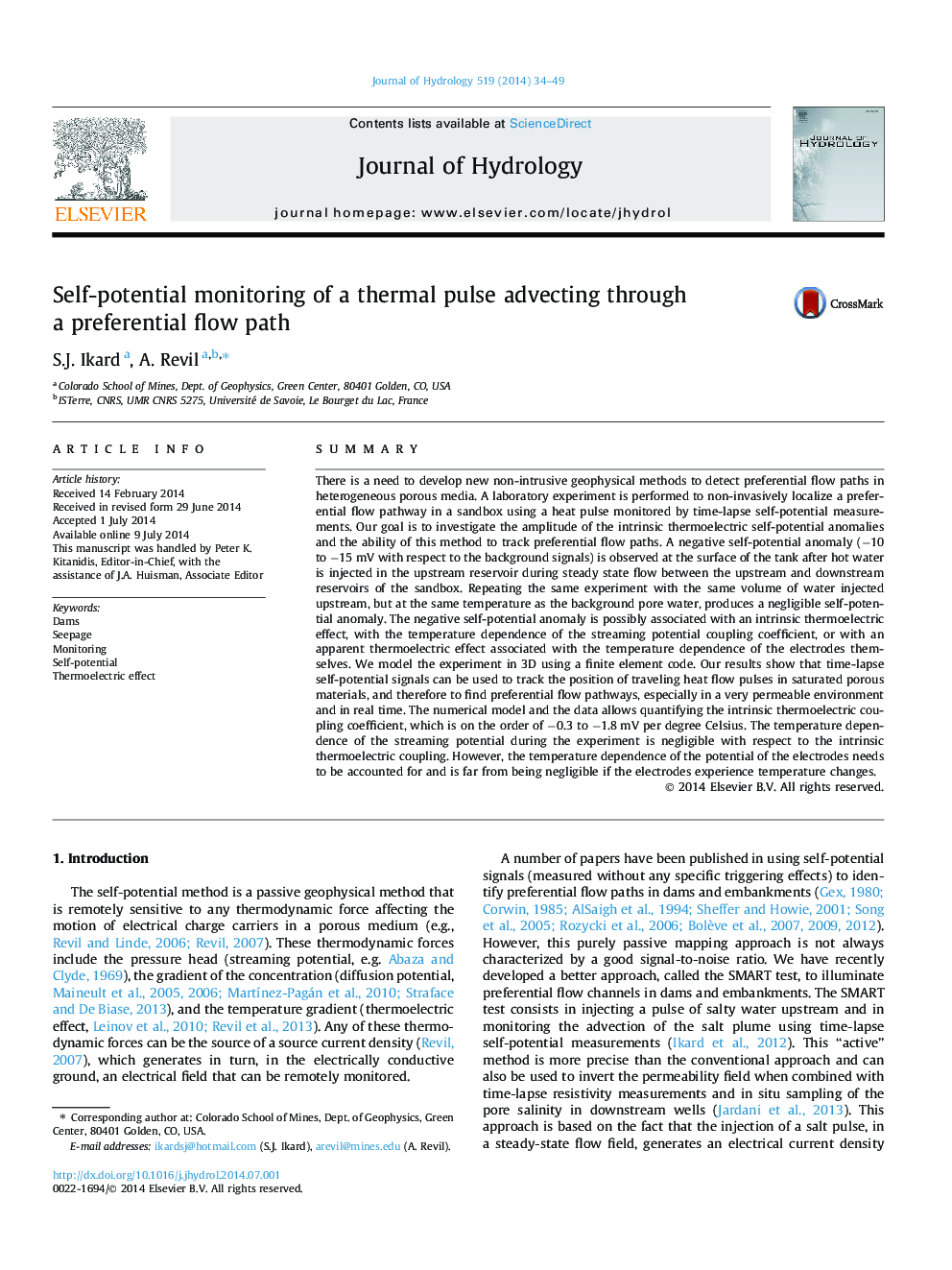| کد مقاله | کد نشریه | سال انتشار | مقاله انگلیسی | نسخه تمام متن |
|---|---|---|---|---|
| 6412337 | 1332898 | 2014 | 16 صفحه PDF | دانلود رایگان |
- A heat pulse test is monitored in steady-state flow conditions.
- The self-potential signals are thermoelectric in nature.
- A finite element code is used to simulate the problem in 4D.
SummaryThere is a need to develop new non-intrusive geophysical methods to detect preferential flow paths in heterogeneous porous media. A laboratory experiment is performed to non-invasively localize a preferential flow pathway in a sandbox using a heat pulse monitored by time-lapse self-potential measurements. Our goal is to investigate the amplitude of the intrinsic thermoelectric self-potential anomalies and the ability of this method to track preferential flow paths. A negative self-potential anomaly (â10 to â15Â mV with respect to the background signals) is observed at the surface of the tank after hot water is injected in the upstream reservoir during steady state flow between the upstream and downstream reservoirs of the sandbox. Repeating the same experiment with the same volume of water injected upstream, but at the same temperature as the background pore water, produces a negligible self-potential anomaly. The negative self-potential anomaly is possibly associated with an intrinsic thermoelectric effect, with the temperature dependence of the streaming potential coupling coefficient, or with an apparent thermoelectric effect associated with the temperature dependence of the electrodes themselves. We model the experiment in 3D using a finite element code. Our results show that time-lapse self-potential signals can be used to track the position of traveling heat flow pulses in saturated porous materials, and therefore to find preferential flow pathways, especially in a very permeable environment and in real time. The numerical model and the data allows quantifying the intrinsic thermoelectric coupling coefficient, which is on the order of â0.3 to â1.8Â mV per degree Celsius. The temperature dependence of the streaming potential during the experiment is negligible with respect to the intrinsic thermoelectric coupling. However, the temperature dependence of the potential of the electrodes needs to be accounted for and is far from being negligible if the electrodes experience temperature changes.
177
Journal: Journal of Hydrology - Volume 519, Part A, 27 November 2014, Pages 34-49
